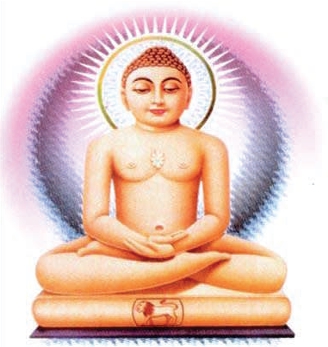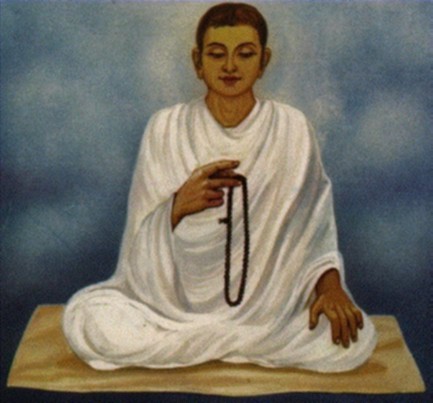
Canonical Commentaries
The canonical texts are variously explained by different authors in different times. These explanations or commentaries are mainly of four categories: Niryuktis, Bhāṣyas, Cūrṇis and Vṛttis. The Niryuktis and the Bhāṣyas are in verse, whereas the Cūrṇis and the Vṛttis are in prose.
The Niryukti commentaries are composed by Preceptor Bhadrabāhu (5th century A.D.) who is different from the author of the Chedasūtras. All the Niryuktis are in Prakrit. The following canonical texts have Niryuktis on them:
The Niryuktis on the Sūryaprajñapti and Ṛṣibhāṣita are extinct.
The Bhāṣyas are also in Prakrit. They explain the text as well as the Niryukti commentary. The following canonical works have Bhāṣyas on them:
Jinabhadra and Saṁghadāsagaṇi (6th century A.D.) are well-known for their Bhāṣyas. The author of the Viśeṣāvaśyakabhāṣya is Jinabhadra. Saṁghadāsagaṇi is the author of the Bṛhatkalpabhāṣya.
The Cūrṇis are in Prakrit mixed with Sanskrit. Jinadāsagaṇi Mahattara (7th century A.D.) is the author of most of the Cūrṇi commentaries. The following canonical texts have Cūrṇis on them:
The Vṛttis are in Sanskrit. Haribhadrasūri, Śīlāṅkasūri, Śāntyācārya, Abhayadevasūri, Maladhārī Hemacandra, Malayagiri, Droṇācārya, Kṣemakīrti etc. are Sanskrit commentators (from 8th century onwards). Abhayadevasūri composed commentaries on all the Aṅgas except the first two, viz., the Ācārāṅga and the Sūtrakṛtāṅga, which were commented upon by Śīlāṅkasūri. There are canonical commentaries in some modern Indian languages, too.

Karmaprābhṛta and Kaṣāyaprābhṛta
The Digambaras believe that the Ācārāṅga etc. have totally vanished. They attach canonical importance to the Karmaprābhṛta and the Kaṣāyaprābhṛta (both in Prakrit). The Karmaprābhṛta is variously known as Mahākarmaprakṛtiprābhṛta, Āgamasiddhānta, Ṣaṭkhaṇḍāgama, Paramāgama, Khaṇḍasiddhānta, Ṣaṭkhaṇḍasiddhānta etc. It is in prose. It was composed by Preceptors Puṣpadanta and Bhūtabali on the basis of the Dṛṣṭivāda. The authors lived between 600 and 700 years after the liberation of Lord Mahāvīra.
The Karmaprābhṛta is divided into six sections:
It deals with the doctrine of karma.
The Kaṣāyaprābhṛta is also known as Preyodveṣaprābhṛta. It was composed by Preceptor Guṇadhara. It is also based upon the Dṛṣṭivāda. Guṇadhara seems to be a contemporary of the authors of the Karmaprābhṛta. The Kaṣāyaprābhṛta deals with attachment, aversion etc. It consists of 180 verses.
Dhavalā and Jayadhavalā
The Dhavalā by Vīrasena is an exhaustive commentary on the first five sections of the Karmaprābhṛta. Just like the Cūrṇi commentary on canonical works it is also in Prakrit mixed with Sanskrit. The Jayadhavalā is a similar commentary on the Kaṣāyaprābhṛta. It was composed by Vīrasena and Jinasena.. They lived in the 9th century A.D.
Kundakunda's Works
Kundakunda's contribution to Jaina philosophy and religion is in no way less important. The Digambaras attach special importance to his works. He wrote only in Prakrit. The Pravacanasāra, Samayasāra, Pañcāstikāyasāra, Niyamasāra etc. are some of his learned works. The Pravacanasāra is a valuable treatise on Jaina ethics. The Samayasāra is an important work on the nature of self. The Pañcāstikāyasāra deals with the following five entities:
- soul,
- matter,
- medium of motion,
- medium of rest and
- space.
The Niyamasāra is a work on Jaina monastic discipline. Kundakunda lived in one of the early centuries of the Christian era.
Mūlācāra and Kārttikeyānuprekṣā
Vaṭṭakera and Kārttikeya, too, probably lived in the early centuries of the Christian era. The Mūlācāra by Vaṭṭakera is a Prakrit treatise on the conduct of Jaina ascetics. It is the Ācārāṅga of the Digambaras.
The Kārttikeyānuprekṣā is a Prakrit work composed by Preceptor Kumāra, also known as Kārttikeya. This treatise treats in twelve chapters of the twelve great reflections to which both monk and layman must devote themselves in order to attain emancipation.
 Mohan Lal Mehta
Mohan Lal Mehta